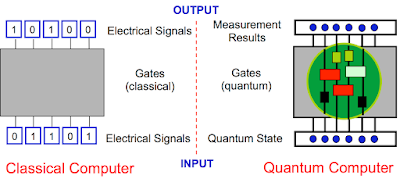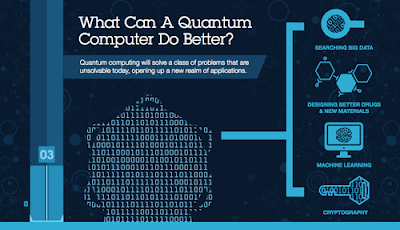Twitter Feed
Transformation Network
The Achilles heel of every transformative business model is their reliance on ever increasing amounts of data that need to be transported quickly across wide area networks and processed at…
Essential Characteristics of Cloud Computing as Digital Transformation
Hybrid IT blends traditional datacenters, managed service providers, and cloud service providers to deliver the necessary mix of information technology services. This IT consumption model enables a composable infrastructure which…
Transformation Innovation
4 Factors Driving Digital Transformation ROI The critical assessment factors for cloud ROI risk probability are the following: Infrastructure utilization Speed of migration to cloud Ability to scale business/mission processes…
Transformation Frameworks
Digital transformation necessitates changes in an organization’s operational processes. According to Harvard, a focus on operations can lead to business process optimization and entirely new revenue streams. Three common routes…
Transformation Infrastructure
Hybrid IT enables a composable infrastructure which describes a framework whose physical compute, storage, and network fabric resources are treated as services. Resources are logically pooled so that administrators need…
Essential Characteristics of Cloud Computing as Digital Transformation
A survey of 2,000 executives conducted by Cognizant in 2016 identified the top five ways digital transformations generate value: Accelerating speed to market Strengthening competitive positioning Boosting revenue growth Raising…
Embrace Transformation
From a business perspective, differentiating business processes and quality customer service are central to overall success. Business leaders must therefore clearly identify and measure how information technology contributes to the…
Computer Vision Advances Zero-Defect Manufacturing
by Kevin L. Jackson Electronics manufacturers operate in a challenging environment. It’s hard enough to keep up with the ever-accelerating rate of change in the industry. Now customers want increasingly…
Real-Time Analytics Power the Roadway of the Future
By Kevin L. Jackson The complexities of citywide traffic are pushing the limits of existing transportation management systems. Outdated infrastructure is based on proprietary, single-purpose subsystems, making it costly to…
Thriving on the Edge: Developing CSP Edge Computing Strategy
Communications Service Providers (CSPs) are facing significant business model challenges. Referred to generally as edge computing, the possibilities introduced by the blending of 5G networks and distributed cloud computing technologies are…
- The release of a new API (Application Program Interface) for the IBM Quantum Experience that enables developers and programmers to begin building interfaces between its existing five quantum bit (qubit) cloud-based quantum computer and classical computers, without needing a deep background in quantum physics.
- The release of an upgraded simulator on the IBM Quantum Experience that can model circuits with up to 20 qubits. In the first half of 2017, IBM plans to release a full SDK (Software Development Kit) on the IBM Quantum Experience for users to build simple quantum applications and software programs.
The IBM Quantum Experience enables anyone to connect to IBM’s quantum processor via the IBM Cloud, to run algorithms and experiments, work with the individual quantum bits, and explore tutorials and simulations around what might be possible with quantum computing. Since its launch less than a year ago, about 40,000 users have run over 275,000 experiments on the IBM Quantum Experience. It has become an enablement tool for scientists in over 100 countries and, to date, 15 third-party research papers have been posted to arXiv with five published in leading journals based on experiments run on the Quantum Experience.
 The broad availability of quantum computing capability could prove to be a significant blow to current data encryption practices. In 2015 the US National Security Agency actually advised US agencies and businesses to prepare for a time when the cryptography protecting virtually all e-mail, medical and financial records, and online transactions would be rendered obsolete by quantum computing. The US National Institute for Standards and Technology (NIST) is also running a competition to spur work on post-quantum algorithms.
The broad availability of quantum computing capability could prove to be a significant blow to current data encryption practices. In 2015 the US National Security Agency actually advised US agencies and businesses to prepare for a time when the cryptography protecting virtually all e-mail, medical and financial records, and online transactions would be rendered obsolete by quantum computing. The US National Institute for Standards and Technology (NIST) is also running a competition to spur work on post-quantum algorithms. - Drug and Materials Discovery: Untangling the complexity of molecular and chemical interactions leading to the discovery of new medicines and materials;
- Supply Chain & Logistics: Finding the optimal path across global systems of systems for ultra-efficient logistics and supply chains, such as optimizing fleet operations for deliveries during the holiday season;
- Financial Services: Finding new ways to model financial data and isolating key global risk factors to make better investments;
- Artificial Intelligence: Making facets of artificial intelligence such as machine learning much more powerful when data sets can be too big such as searching images or video; or
- Cloud Security: Making cloud computing more secure by using the laws of quantum physics to enhance private data safety.
This content is being syndicated through multiple channels. The opinions expressed are solely those of the author and do not represent the views of GovCloud Network, GovCloud Network Partners or any other corporation or organization.
( Thank you. If you enjoyed this article, get free updates by email or RSS – © Copyright Kevin L. Jackson 2017)
Cloud Computing
- CPUcoin Expands CPU/GPU Power Sharing with Cudo Ventures Enterprise Network Partnership
- CPUcoin Expands CPU/GPU Power Sharing with Cudo Ventures Enterprise Network Partnership
- Route1 Announces Q2 2019 Financial Results
- CPUcoin Expands CPU/GPU Power Sharing with Cudo Ventures Enterprise Network Partnership
- ChannelAdvisor to Present at the D.A. Davidson 18th Annual Technology Conference
Cybersecurity
- Route1 Announces Q2 2019 Financial Results
- FIRST US BANCSHARES, INC. DECLARES CASH DIVIDEND
- Business Continuity Management Planning Solution Market is Expected to Grow ~ US$ 1.6 Bn by the end of 2029 - PMR
- Atos delivers Quantum-Learning-as-a-Service to Xofia to enable artificial intelligence solutions
- New Ares IoT Botnet discovered on Android OS based Set-Top Boxes














